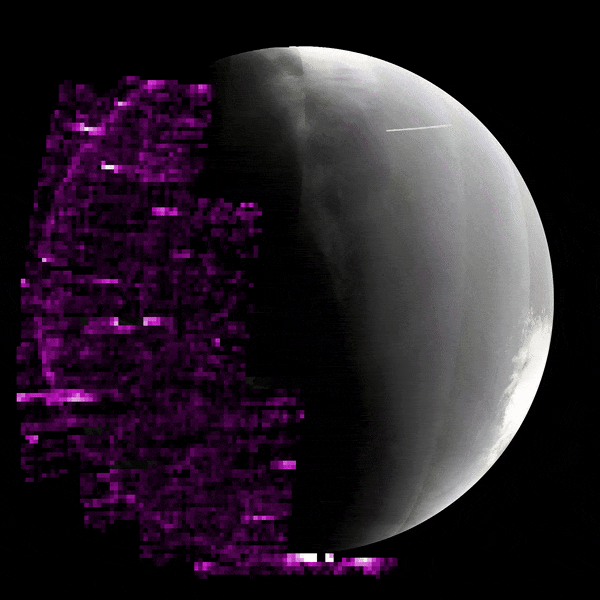Solar System
How to See the Milky Way This Weekend
Late August is a great time to observe the dazzling core of our galaxy, and with the upcoming new moon, viewing conditions should be ideal—as long as you're in a very dark area
Our Moon Was Likely Covered in a Magma Ocean Long Ago, and New Data From India's Lunar Rover Supports That Theory
Soil composition measurements from the Chandrayaan-3 mission reveal white rock called ferroan anorthosite, which would have floated to the surface in an ocean of magma
A Rare 'Super Blue Moon' Will Be Visible Monday Night: What Does That Mean?
Tonight’s full moon will be bigger and brighter than usual, and it’s the third of four full moons this summer
Asteroid That Ended the Dinosaurs Came From Beyond Jupiter, Study Finds
Metal isotopes delivered to Earth by the asteroid reveal it's consistent with space rocks formed in the outer solar system
Mars Hosts a Giant Reservoir of Water Underground, We Just Can't Easily Reach It, Study Finds
The water is enough to cover the Martian surface in a mile-deep ocean, but it's beyond the reach of drills for now, according to researchers
NASA Retires Orbiting Telescope That Charted Asteroids for Over a Decade
NEOWISE, which looked for potentially hazardous objects in the solar system, received its last command on Thursday and will burn up when it re-enters Earth's atmosphere
Meteorite Strikes Are the Primary Creator of the Moon's Thin Atmosphere, Study Finds
Researchers examined lunar soil samples collected during the Apollo missions to determine which weathering processes contribute most to replenishing the moon's atmosphere
How to Watch the Perseids, the 'Best Meteor Shower of the Year'
The annual celestial event is one of the year's most anticipated, and it will peak from August 11 to 12
NASA's Curiosity Rover Accidentally Discovers Sulfur Crystals on Mars
The rover’s wheel cracked open a rock and revealed pure elemental sulfur, which researchers have never seen on the Red Planet before
How to Watch the Southern Delta Aquariids Meteor Shower
Though not as prolific as the Perseids, this annual spectacle is 'scientifically interesting' because its comet of origin remains a mystery
Astronomers Propose New Criteria to Classify Planets, but Pluto Still Doesn't Make the Cut
The new definition would define planets based on mass, rather than more ambiguous shape and size characteristics
Two Massive Asteroids Will Fly Past Earth This Week. Here's What to Know
Within 42 hours of each other, the pair of large asteroids, which both have no chance of impacting our planet, will approach Earth as they orbit the sun
Jupiter's Signature Red Spot May Have Evolved More Than Once
The planet's massive storm, known as the Great Red Spot, seems to be different from a spot first observed at roughly the same location in the 17th century, a new study finds
After Months of Glitches and Gradual Fixes, Voyager 1 Is Fully Operational Once Again
Currently 15 billion miles away from Earth, one of NASA’s longest-tenured spacecraft is back from the brink after a technical failure last year put its future in question
Mars Was Hit With a Solar Storm Days After Earth's Aurora Light Show, NASA Says
Studying this event could hold lessons for scientists about how to protect astronauts from radiation on future trips to the Red Planet
A Giant Interstellar Cloud May Have Once Enveloped Earth, Potentially Causing Ice Ages
Astronomers suggest this cold, dense cloud compressed our sun's protective field between two and three million years ago, leaving the Earth exposed to cosmic material
Astronomers Discover Water Frost on Mars' Tallest Volcanoes
On early winter mornings, a thin layer of ice forms in craters atop the Red Planet's towering peaks, near its equator, according to a new study
Missed the Auroras in May? Here’s How to See Them Next Time
Three veteran aurora chasers and a NASA scientist share everything you need to know to check these dazzling displays off your bucket list
Missed the 'Parade of Planets'? These Upcoming Alignments Will Likely Be Better, Anyway
Astronomers tempered expectations of the celestial event this week, pointing to others in the near future as more exciting opportunities for sky watchers
Venus Might Still Have Active Volcanoes, as Recent Lava Flows Suggest 'Ongoing' Eruptions
Astronomers have again discovered evidence of recent volcanic activity on Earth's sister planet in data from the 1990s
Page 2 of 16
:focal(1024x688:1025x689)/https://tf-cmsv2-smithsonianmag-media.s3.amazonaws.com/filer_public/fc/48/fc48bd83-e879-4da8-95d0-3cfccd785a59/34565702861_ca071e26f5_k.jpg)
:focal(800x602:801x603)/https://tf-cmsv2-smithsonianmag-media.s3.amazonaws.com/filer_public/07/9f/079f304b-c1e9-4f1f-8e4f-08cd8c46b768/volcanic_planet_5_r_1.png)
:focal(2048x1375:2049x1376)/https://tf-cmsv2-smithsonianmag-media.s3.amazonaws.com/filer_public/81/d4/81d43b86-bf2b-4552-b96c-4fd10f5e797e/moonrise-at-vasquez-rocks-credit-nasa-preston-dyches-cc-by-nc-20.webp)
:focal(2791x1781:2792x1782)/https://tf-cmsv2-smithsonianmag-media.s3.amazonaws.com/filer_public/9a/9a/9a9a1da9-da4f-43a5-8a09-f7146fabb8d3/gettyimages-713781277.jpg)
:focal(960x960:961x961)/https://tf-cmsv2-smithsonianmag-media.s3.amazonaws.com/filer_public/0f/aa/0faacf87-c7f5-4345-89ac-9576979286d8/pia02653large.jpg)
:focal(385x220:386x221)/https://tf-cmsv2-smithsonianmag-media.s3.amazonaws.com/filer_public/ec/8a/ec8a9a7b-cf9a-455c-a3d9-24d09762caef/pia17254_modest.jpg)
:focal(1952x1952:1953x1953)/https://tf-cmsv2-smithsonianmag-media.s3.amazonaws.com/filer_public/58/05/58052866-392d-470b-9b8a-a8bcfbb10181/as11-40-5948orig.jpg)
:focal(960x695:961x696)/https://tf-cmsv2-smithsonianmag-media.s3.amazonaws.com/filer_public/d2/da/d2da1779-6e01-4735-ba7e-03bbc828e402/nhq202108110002large.jpg)
:focal(1024x575:1025x576)/https://tf-cmsv2-smithsonianmag-media.s3.amazonaws.com/filer_public/38/bb/38bb7442-9862-40b8-89ff-a095e76d9abb/1-pia26309-curiosity-views-16x9-1.jpeg)
:focal(1500x871:1501x872)/https://tf-cmsv2-smithsonianmag-media.s3.amazonaws.com/filer_public/8a/bd/8abd6e51-d12a-44c5-915e-6c10520b20ed/gettyimages-1411415005.jpg)
:focal(1051x567:1052x568)/https://tf-cmsv2-smithsonianmag-media.s3.amazonaws.com/filer_public/00/e2/00e2a283-4c55-4442-8304-5382614f5ef3/pia11800large.jpg)
:focal(1750x1083:1751x1084)/https://tf-cmsv2-smithsonianmag-media.s3.amazonaws.com/filer_public/90/df/90dfeb2c-1659-4b56-969c-9c4255f9c2f7/space_safety_programme_-_near_earth_objects.jpg)
:focal(827x543:828x544)/https://tf-cmsv2-smithsonianmag-media.s3.amazonaws.com/filer_public/30/00/3000c3d2-1519-4375-a014-bcc8b5d5fed1/pia21985orig.jpg)
:focal(4096x2321:4097x2322)/https://tf-cmsv2-smithsonianmag-media.s3.amazonaws.com/filer_public/c1/85/c185108a-791f-4610-9084-98dcb2c0a49a/voyager2.jpg)

:focal(537x445:538x446)/https://tf-cmsv2-smithsonianmag-media.s3.amazonaws.com/filer_public/e8/b6/e8b68174-1c9b-465e-8469-b66151dd09fa/heliosphere.jpg)
:focal(845x459:846x460)/https://tf-cmsv2-smithsonianmag-media.s3.amazonaws.com/filer_public/ef/ff/efffec3e-d663-4701-8116-ec653f5d3ca9/perspective_view_of_frosty_olympus_mons.png)
:focal(360x240:361x241)/https://tf-cmsv2-smithsonianmag-media.s3.amazonaws.com/filer_public/47/ed/47ed2f31-f77b-4c3f-a20a-574bc1a8c214/sinha2_aurorasaurus_pho_20240411.jpg)
:focal(4000x2095:4001x2096)/https://tf-cmsv2-smithsonianmag-media.s3.amazonaws.com/filer_public/03/64/03647ce0-0203-473c-8ba1-c5cc4725de7e/gettyimages-182910299.jpg)
:focal(625x351:626x352)/https://tf-cmsv2-smithsonianmag-media.s3.amazonaws.com/filer_public/d9/43/d9438ca3-e253-40a4-b6eb-142189c2657c/1-jpegpia00108.webp)